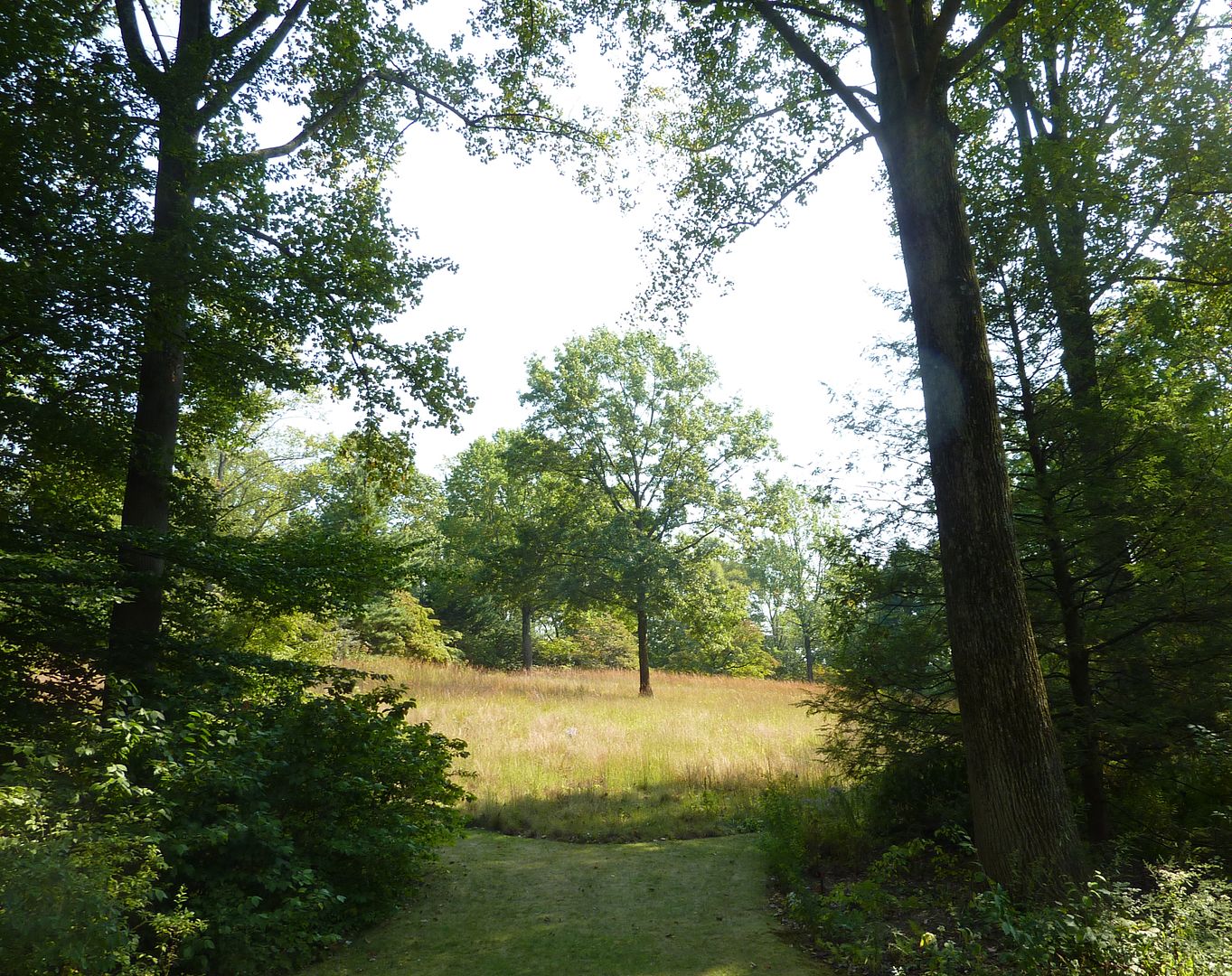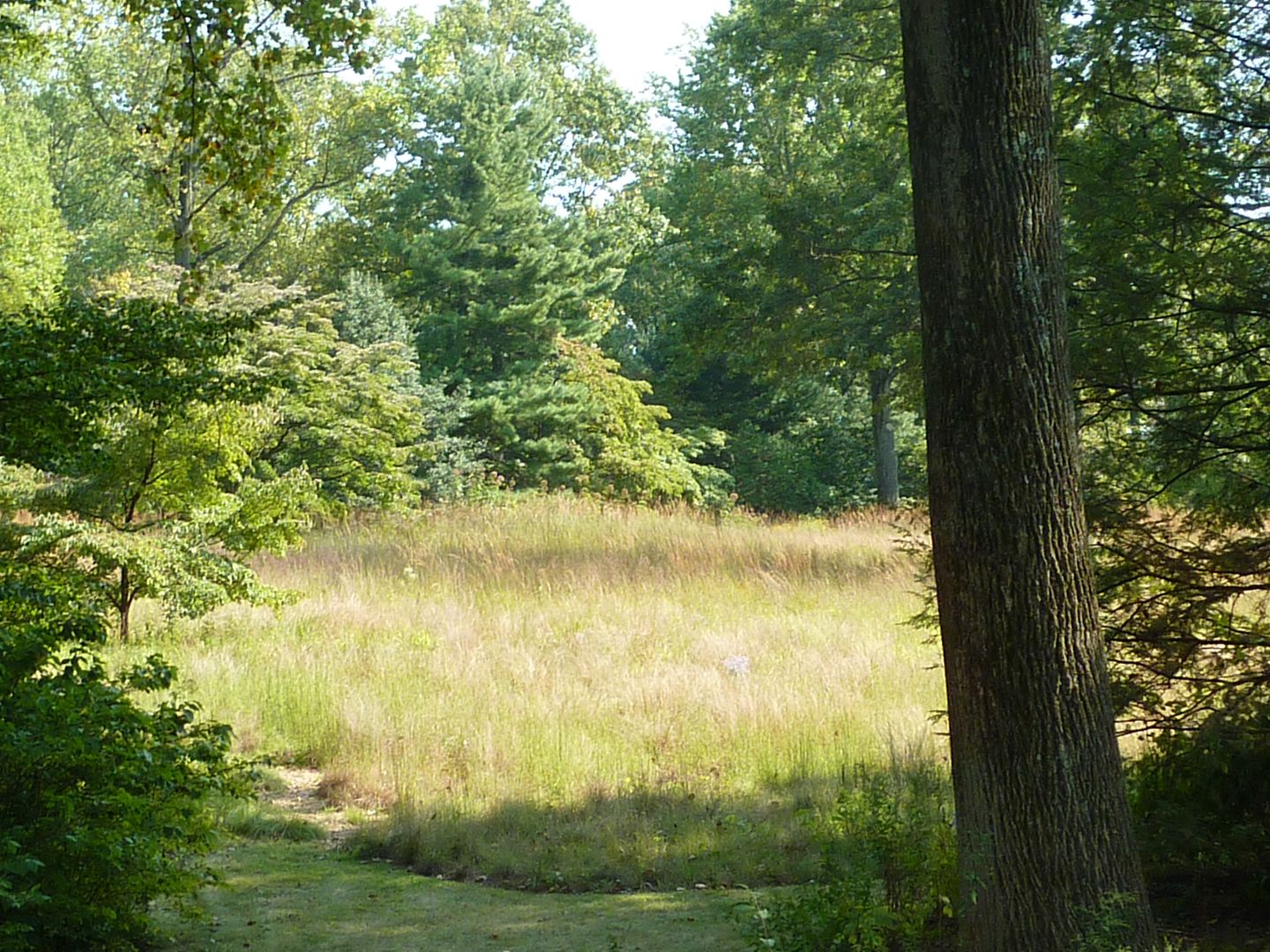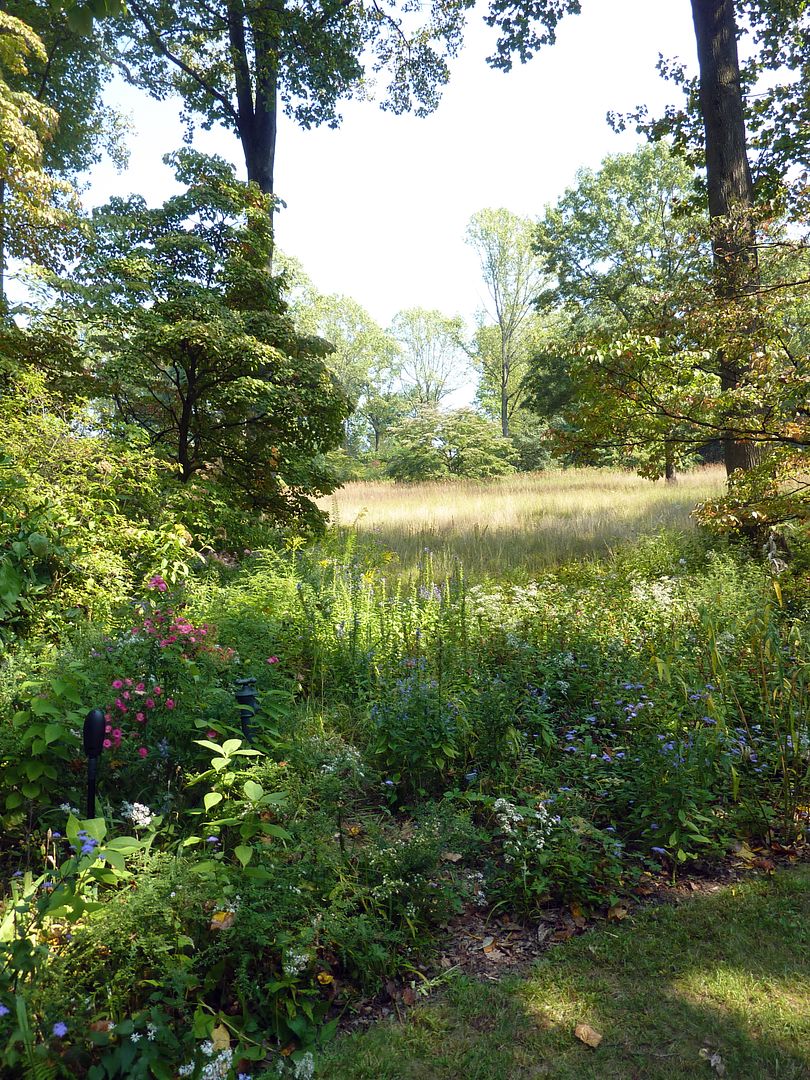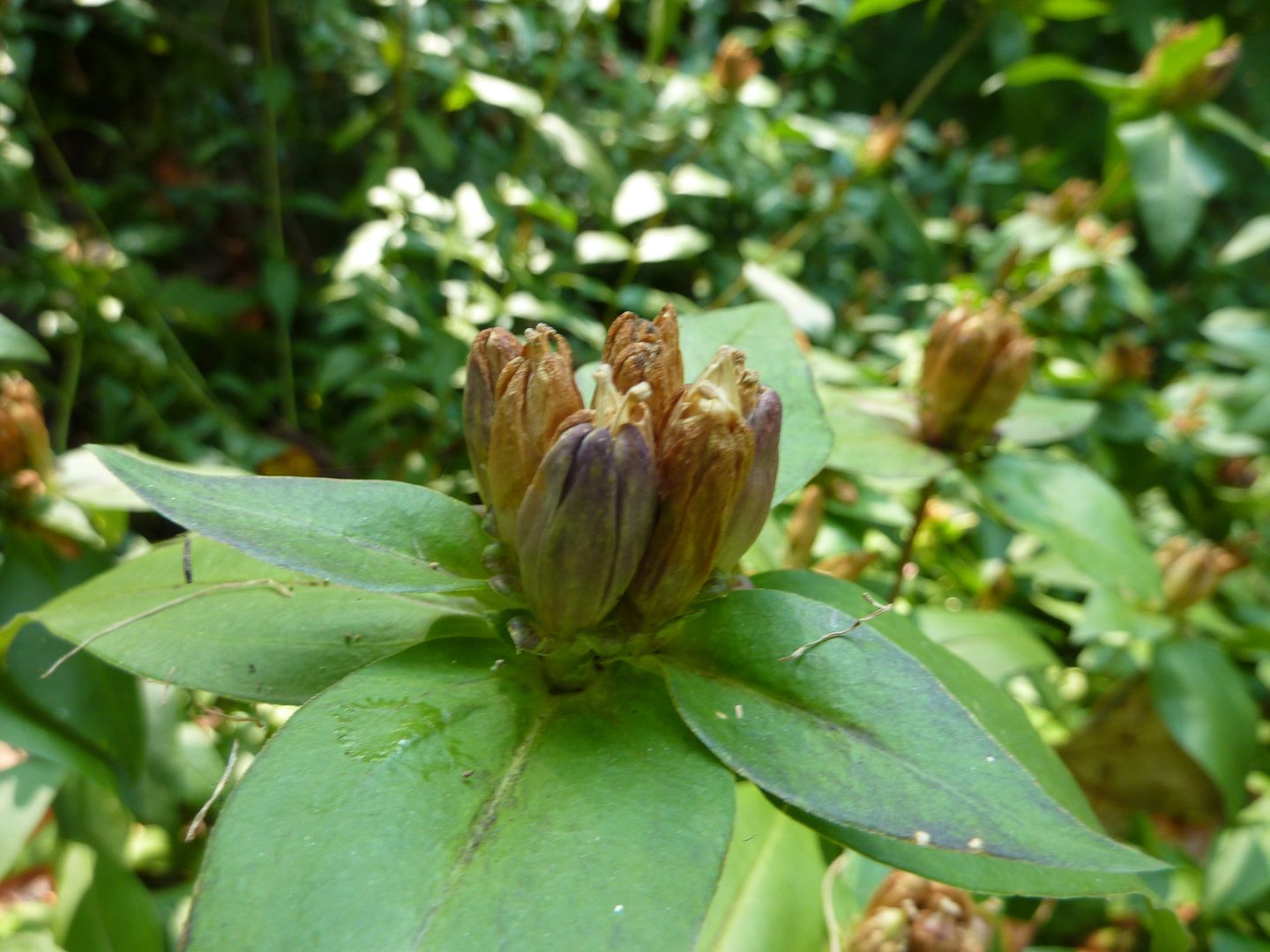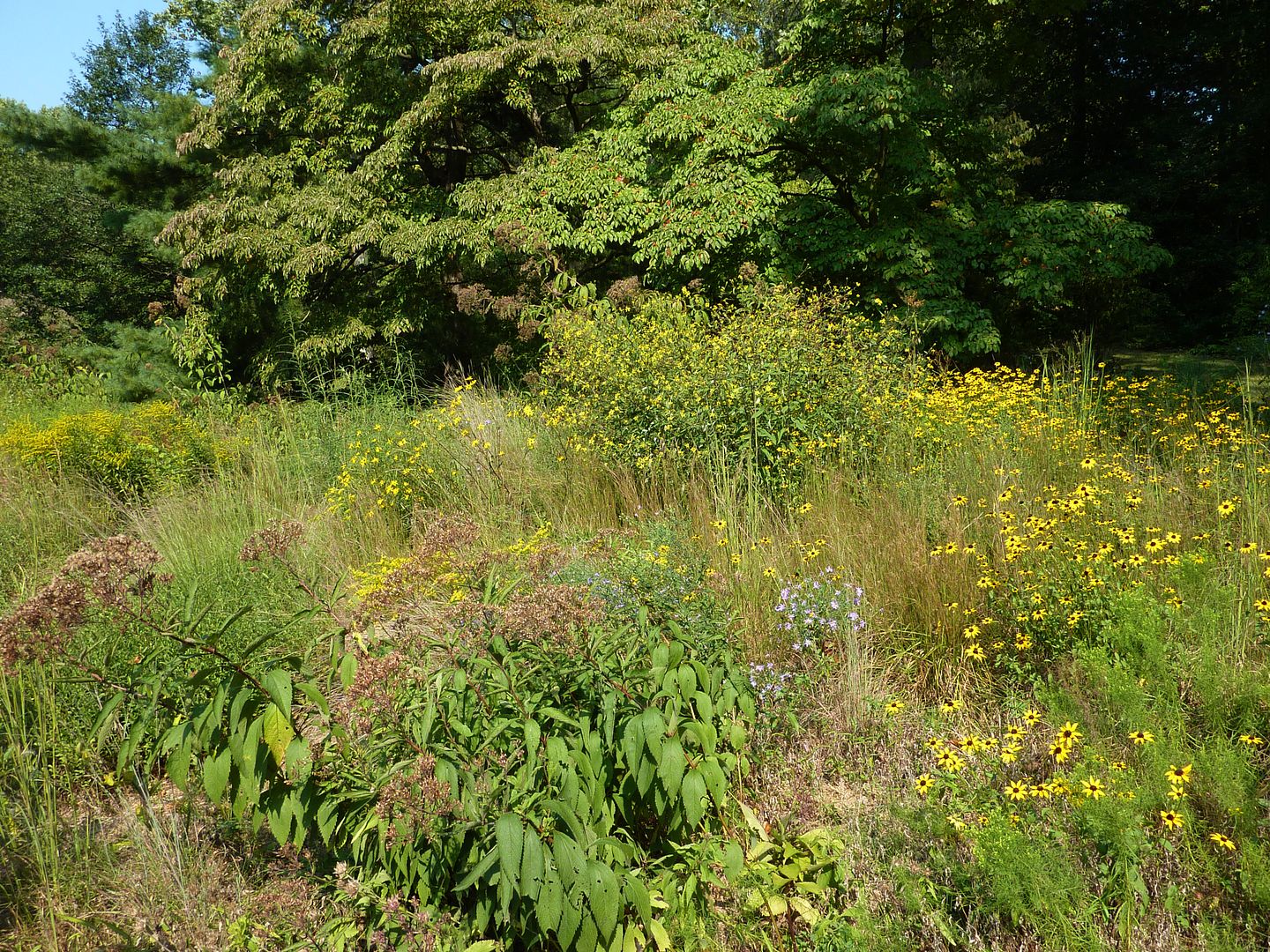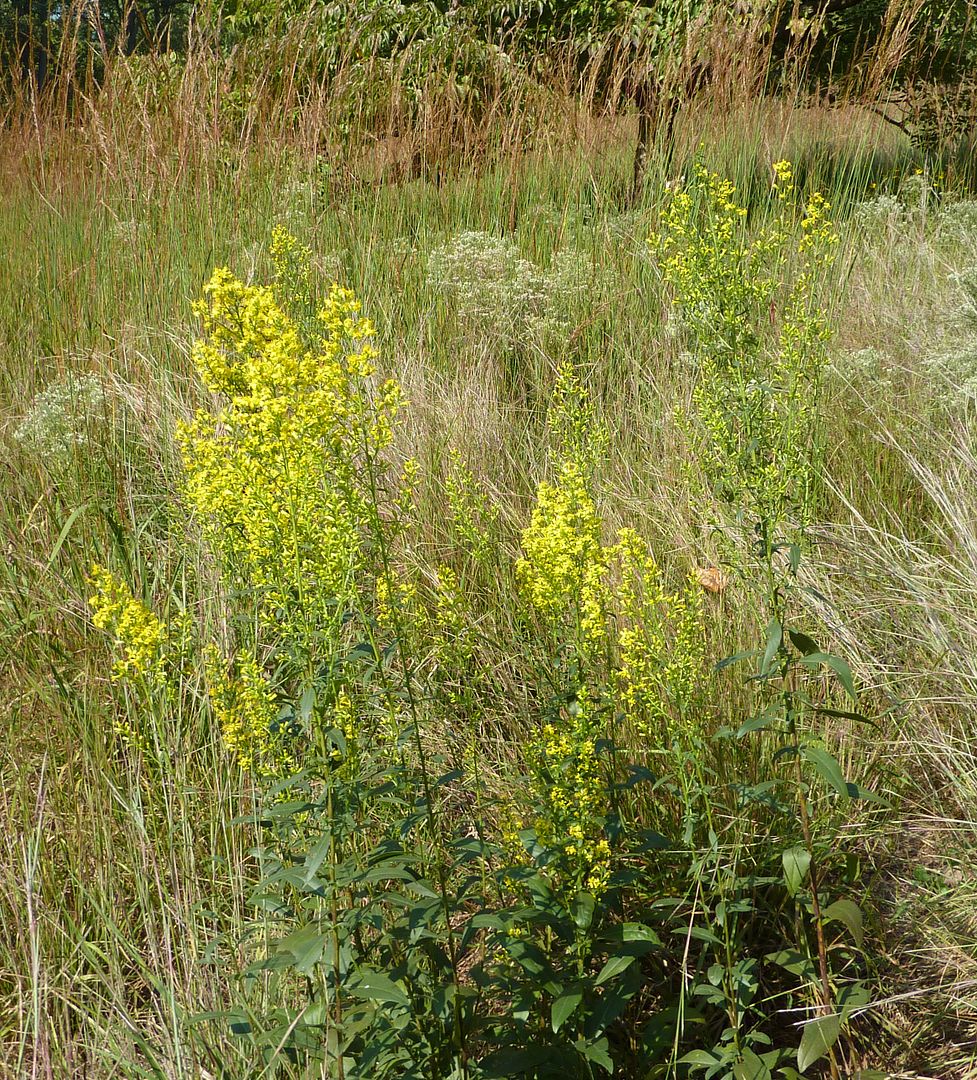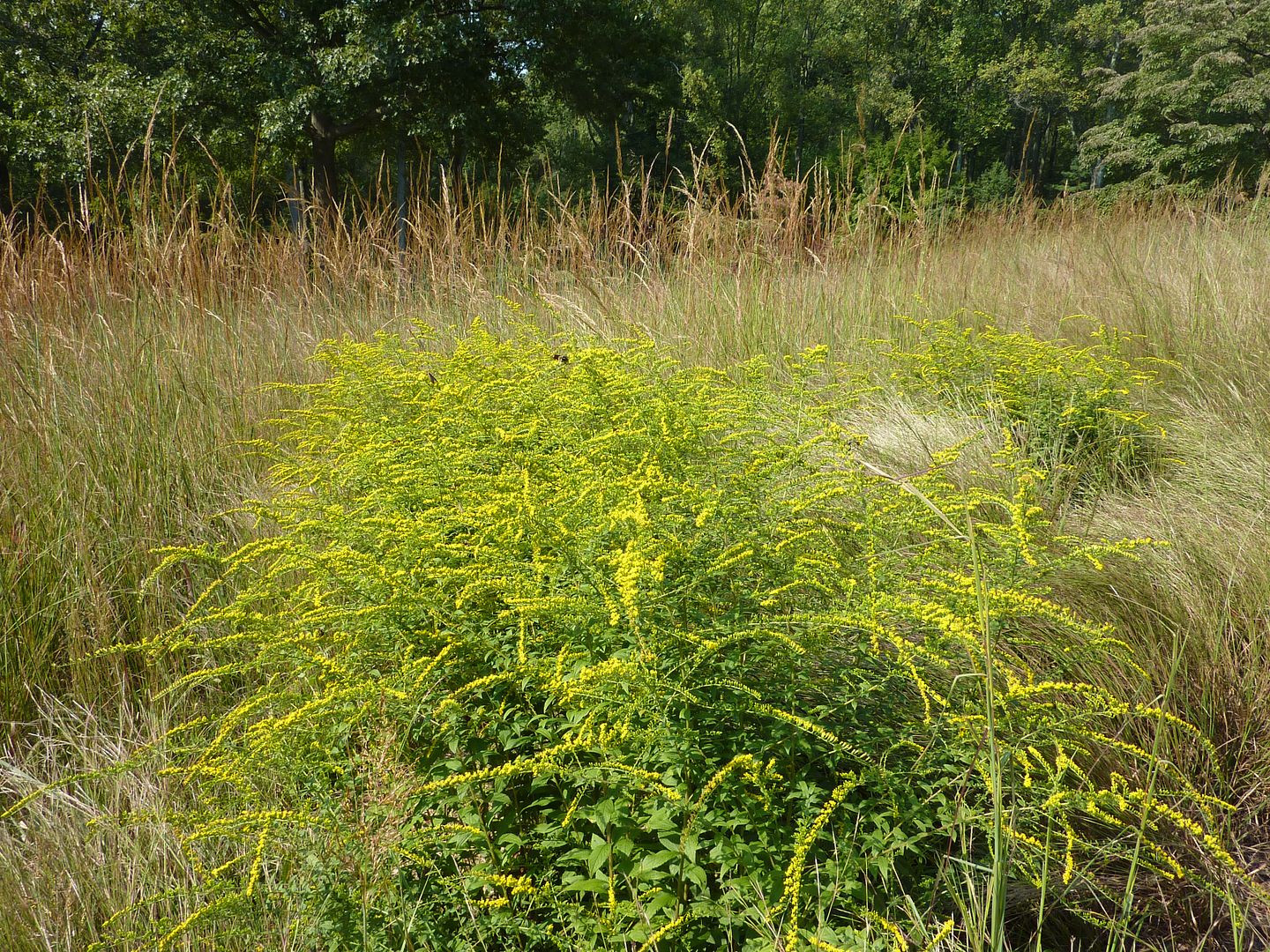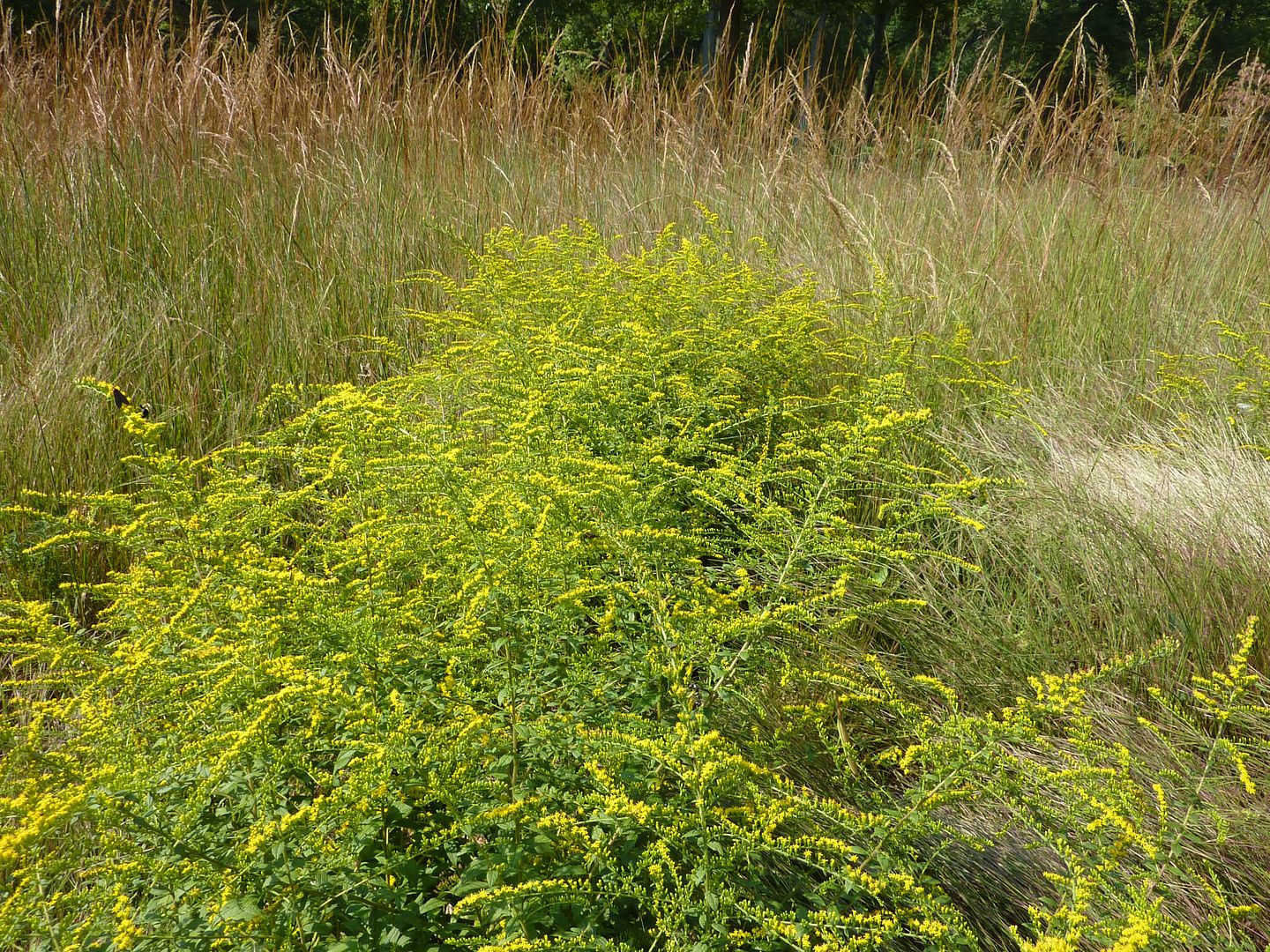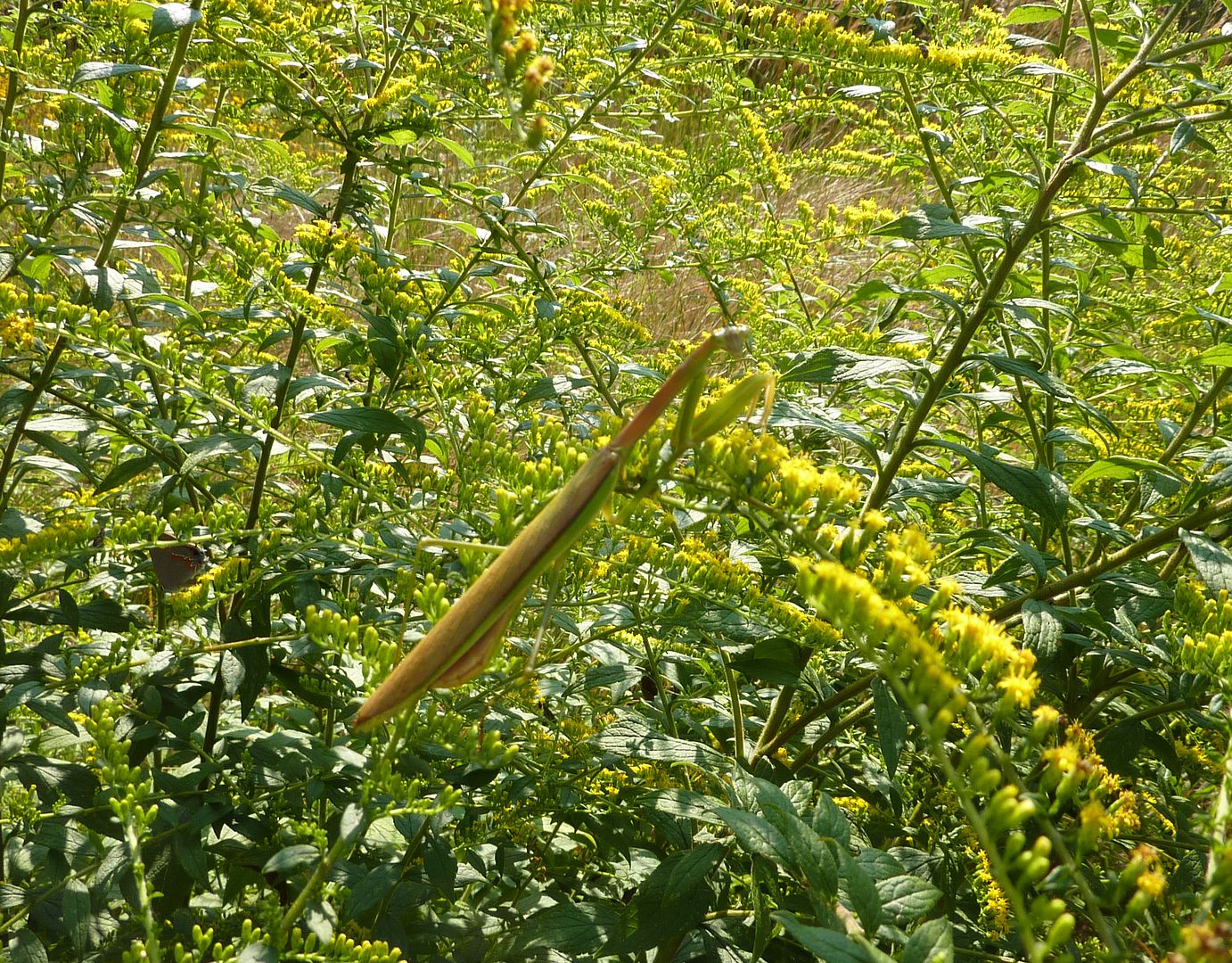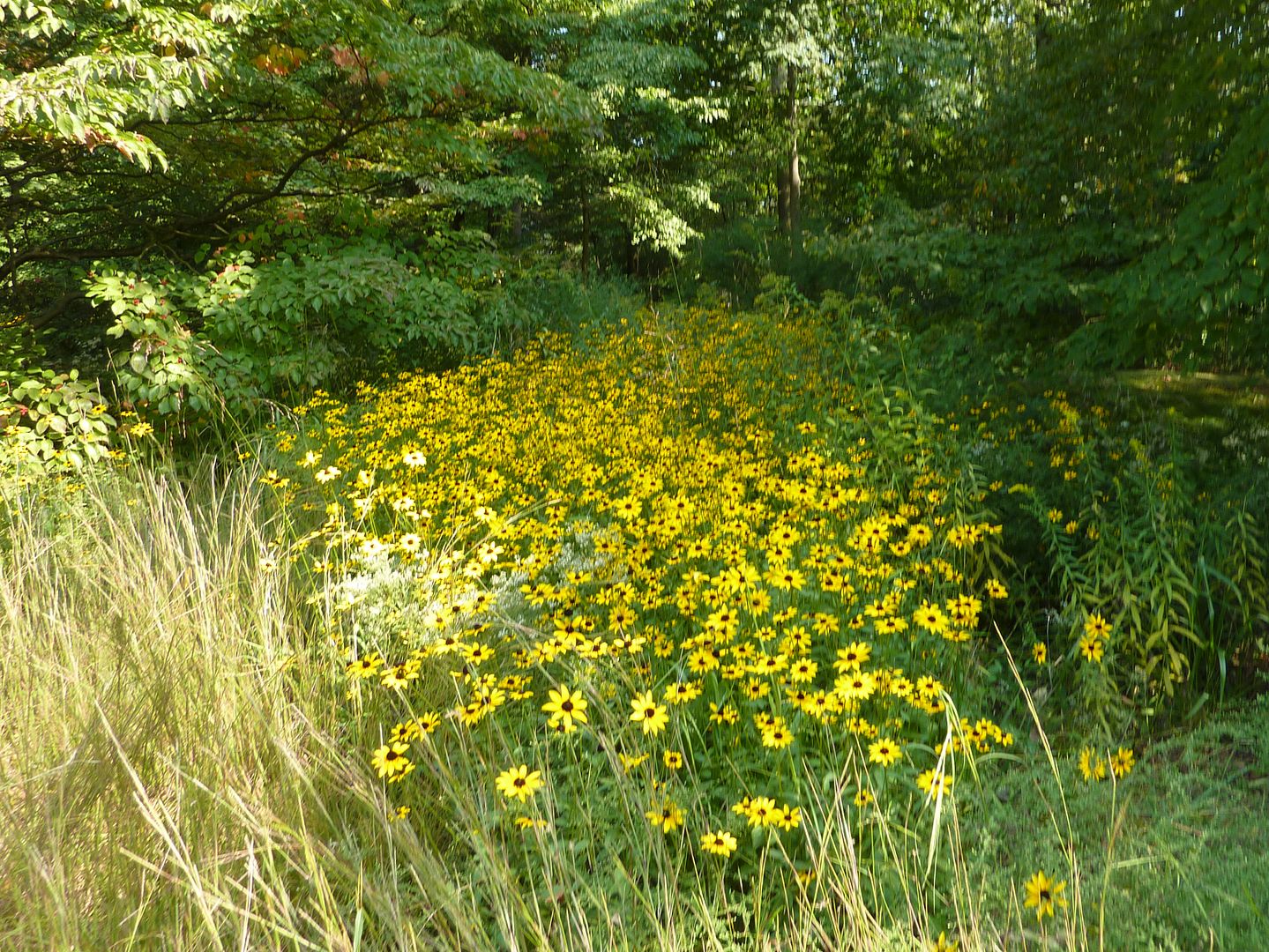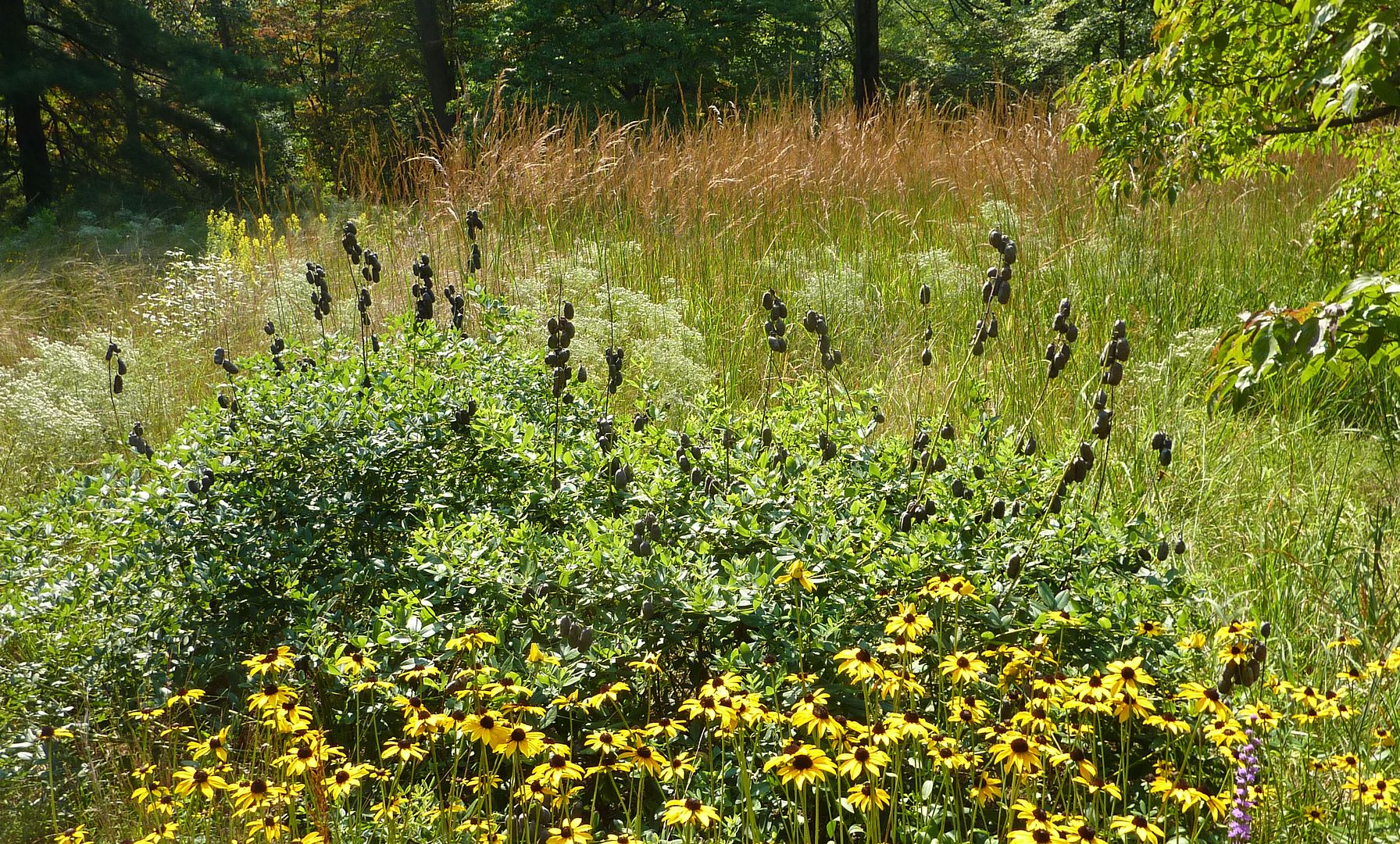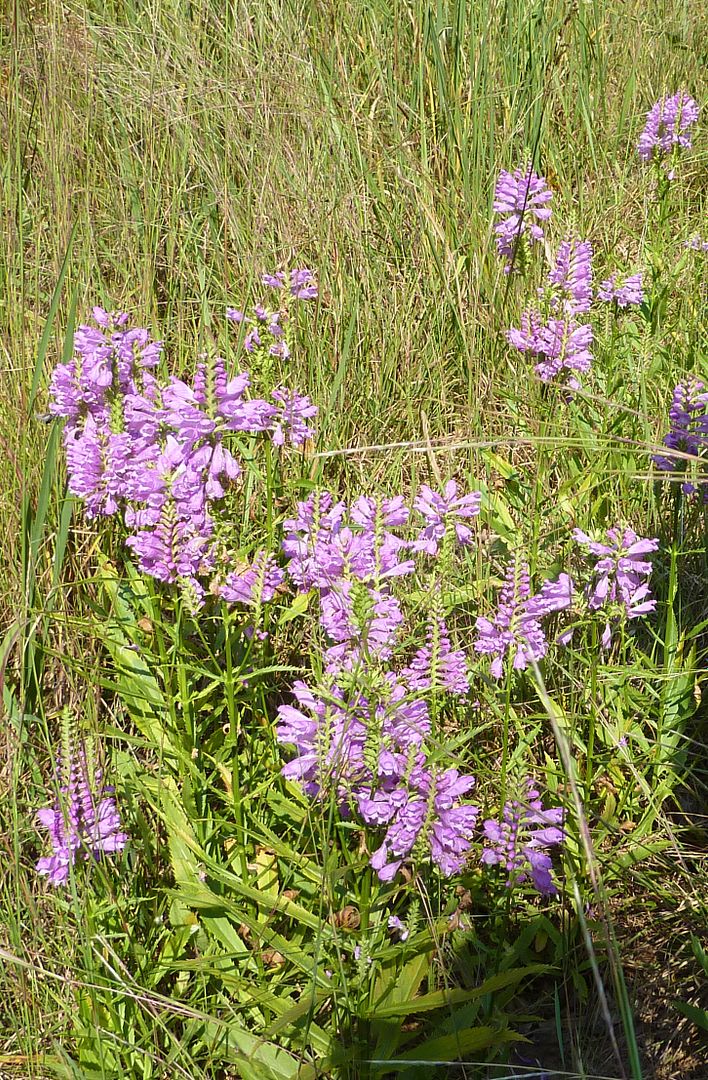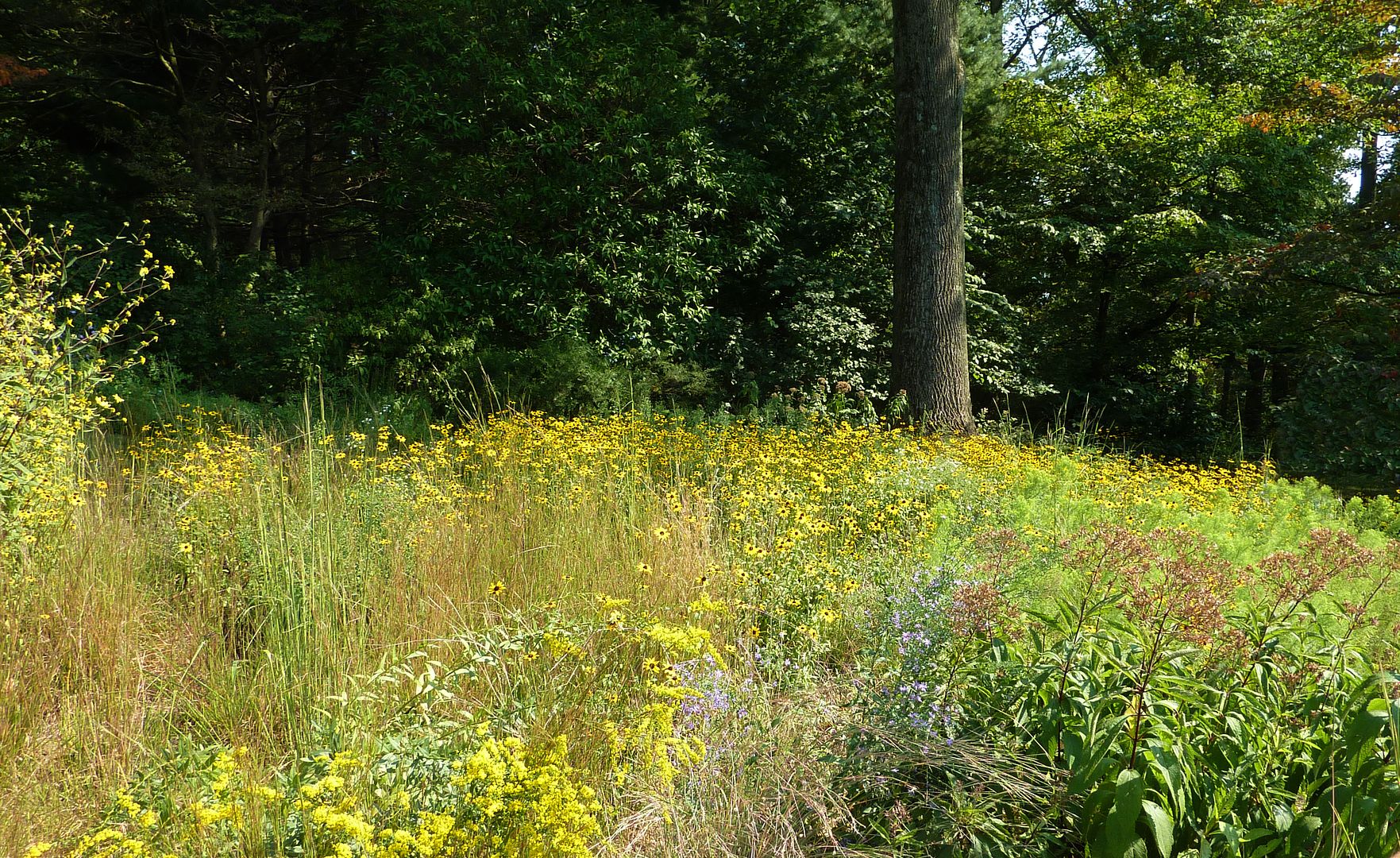This is what put me in awe of the whole tour. It's such a shame my camera didn't capture the fine details.
Things like lighting change depending on how much light I'm standing in, how close, if I'm using a flash and so on. And sadly I don't know enough about photography to do this meadow justice.
This may not have been full of flowers but it's pretty in it's own right. Actually the entire meadow was in bloom it's just most flowering grasses aren't as pretty unless grown in mass to make an effect. Something lost in my photos thus far is how tall the grasses actually are. I believe shorter grasses were planted in front with a hard to make out aster here and there, but towards the back all the grasses were as tall as me. The red brown flourishes of the flower heads are really striking as they blow with the wind and sway in unison.
Something I wish I'd captured better was the soft evergreen to the right in the photo above. There's something about looking through it at the untamed wild beyond that softened the approach. It was like looking through a natural fence.
The meadow there is wonderful and can be viewed through many forest openings.
This Symphyotrichum novae-angliae, New England Aster... a red/pink variety, was quite the eye catcher.
Conoclinium coelestinum, Blue Mist Flower. These lined the forest patch. I have a few in my garden that I planted only just this year. Oddly enough the flower color is off, more red magenta.... which is odd for a plant called blue mist flower.
This is Blue Gentian, I believe the species was Gentiana makinoi but that might be wrong. The flowers are normally a rich royal blue color. These were obviously past their prime but I was taken by the wonderful chocolate color the flowers become. Everyone highlights the blue color of the flowers when selling these because there are so few blue flowering plants and at the end of summer no less that they forget the other attributes as well.
Now we move onto the meadow. The tour guides are the first people to tell you that this is an artificially maintained meadow. Without constant weeding out of tree and other woody species this patch of grass would return to a forest in a matter of years. Normally wildfires and herds of animals like bison, (elephants if you're in Africa), would create and maintain the Savannah-like habitat. Sadly deer aren't that good at what they do.
I really enjoyed seeing all the Solidagos blooming. It was nice for once to have someone around who could tell them all apart. It's such a massive genus.
Solidago speciosa, Showy Goldenrod.
The flowers to this have a little more energy invested in them than other Solidago species. Notice how they actually have little flower petal-like rays circling each flower. The blooms also pull away form the stem and space themselves out a bit more too. Very nice plant.
Solidago rugosa, Wrinkle-Leaf Goldenrod. They had this species on display on purpose. First though notice the long shooting habit the flower stalks have. They all shoot away from the plant much more than most other species and someone came along to cultivate this into...
Solidago rugosa 'Fireworks'
It's called Fireworks because it looks like one. I actually planted one of these this year. Very nice plant. It has almost the habit of forming a bush to it.
I also spied this mantis among the foliage. It was picking off the many insects pollinating the flowers.
Rudbeckia fulgida, Black-Eyed Susan. I was a little surprised to see these blooming. They must have been dead headed or something because the ones I have in my garden are well past flowering and look sort of dead at this time of year. It's always charming to see this plant in mass.
From front to back, Black Eye'd Susan, False Indigo and it's black seed pods, patches of White Bone Set, and assorted grasses such as Big Blue Stem and Yellow Indian Grass.
Physostegia virginiana, Obedient Plant. I was having fun playing with this while the tour guide talked a little about plants. Basically you push the flowers from left to right and they stay there.
I'm toying with the idea of turning the lawn into this.
So that pretty much ends the tour of the Mt. Cuba Center in the late summer fall time. There were so many plants I didn't get around to covering. Many shrubs loaded with berries, plants with serious ornamental appeal at this time of year, and still more flowers I didn't get good pictures of. There were so many asters with butterflies dancing around them too. It feels like such an insult that only 14 people showed up to this class. It only cost $10 and they give you a free plant at the end to take home.
